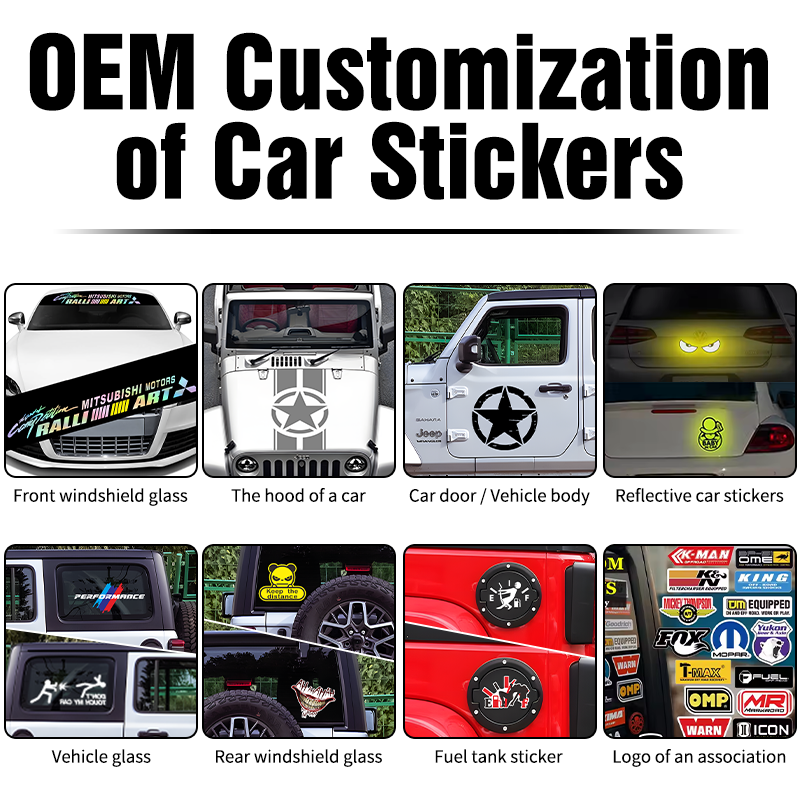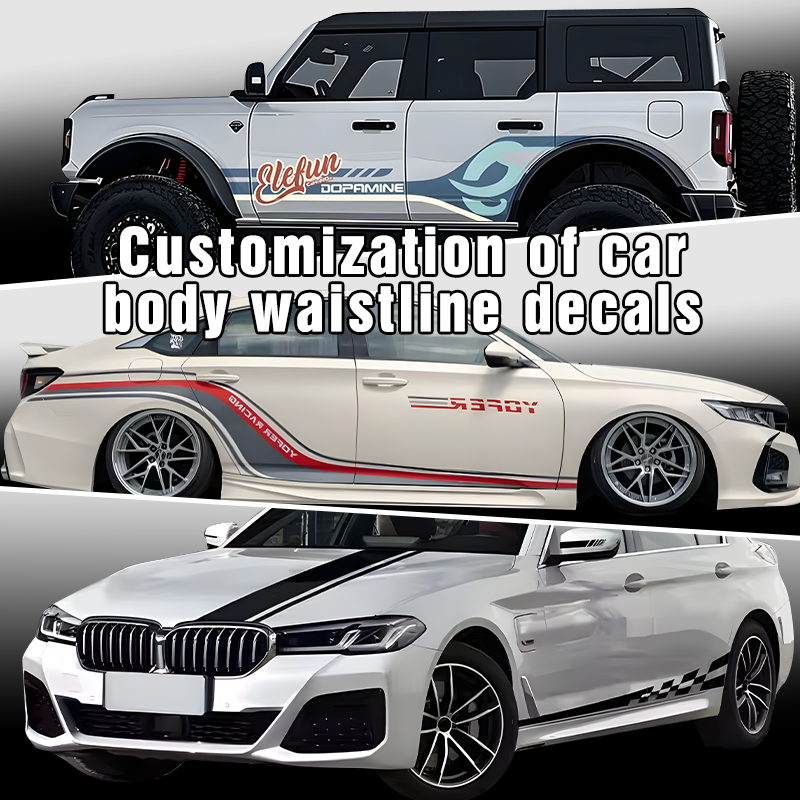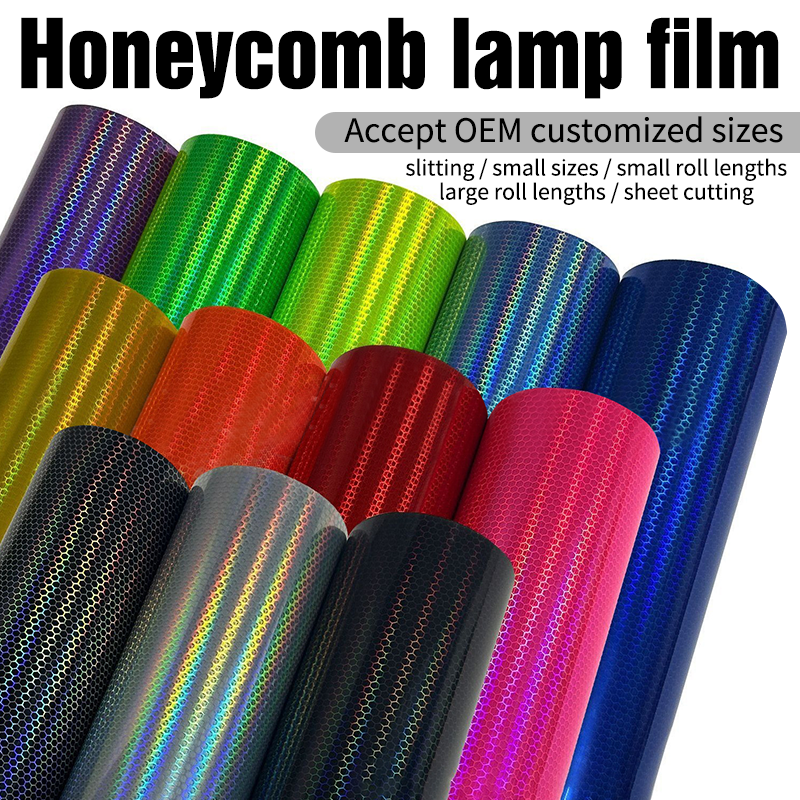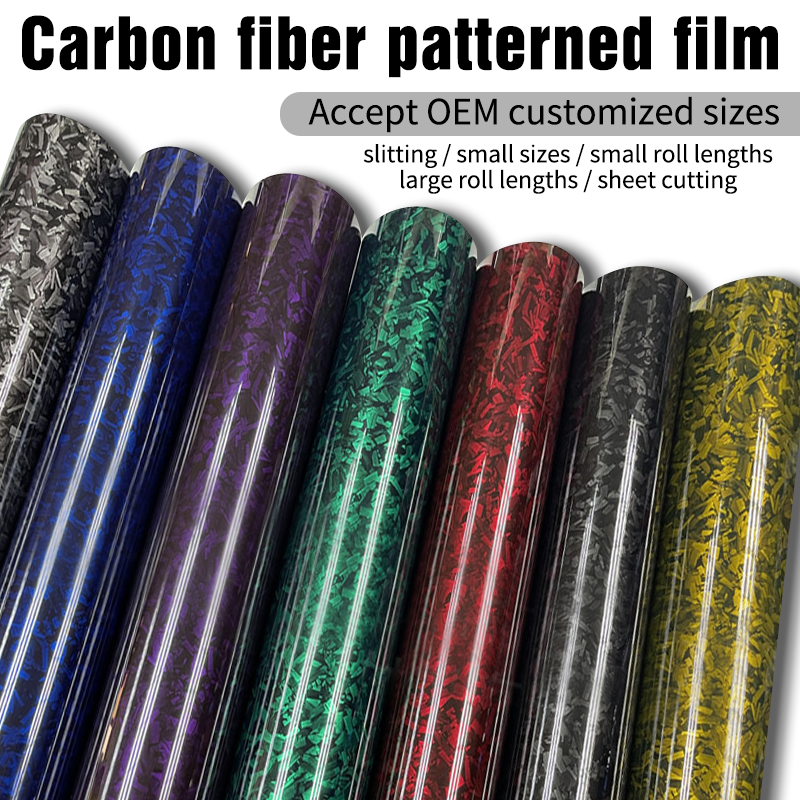How to firmly stick car stickers without damaging the car paint?
Release Time : 2025-03-27
As a personalized decoration method, car stickers are increasingly favored by car owners. It can not only show the unique taste and style of the car owner, but also add a different color to the vehicle. However, how to firmly stick car stickers without damaging the car paint has become the focus of many car owners.
1. Preparation: Make sure the surface of the car body is clean and dry
Before sticking car stickers, the first step is to ensure that the surface of the car body is clean and dry. Any grease, dust or residual adhesive may affect the sticking effect and durability of the sticker. Therefore, the car body should be thoroughly cleaned with a mild detergent and a soft cloth, paying special attention to removing stains and grease. After cleaning, wipe the car body with a clean cloth to ensure that the surface is completely dry and no moisture remains.
2. Choose high-quality car stickers
The quality of car stickers is directly related to its sticking effect and durability. Therefore, when choosing car stickers, you should pay attention to the selection of materials and quality considerations. High-quality car stickers are usually made of durable materials such as PVC and vinyl, with good tear resistance and durability. In addition, the appropriate pattern and color should be selected according to personal preference and vehicle style. Make sure that the adhesive part of the sticker is moderately sticky, so that it can be firmly pasted and easily removed when needed without leaving residual glue.
3. Determine the position of the sticker and the use of auxiliary tools
Before pasting car stickers, gently draw the outline of the sticker on the car with a pencil, which will help to fine-tune the position after the sticker is applied. For complex graphics, a transparent template can be used to assist in pasting to ensure the accuracy and beauty of the sticker. At the same time, prepare some necessary tools such as scrapers, watering cans (used when wet pasting), utility knives and transfer films for use during the pasting process.
4. Pasting skills: application of dry pasting and wet pasting
Dry pasting method: Keep the car body and stickers dry, start from one end, and gently spread the stickers on the car body to avoid bubbles. Use a scraper to evenly smooth the sticker from the middle to the edge to ensure a tight fit. If bubbles appear, do not rush to tear off the sticker. Use a scraper to gently move outward from one corner to eliminate the bubbles. After pasting, wait for a while for the sticker to completely cure.
Wet pasting method: Use a watering can to evenly sprinkle water on the part where the car sticker is needed to reduce the viscosity of the sticker and facilitate the adjustment of the position. After determining the pasting position, paste it while gently scraping it with a tool and peeling off the transfer film. After adjusting the position, scrape off the water and bubbles repeatedly with force, and then tear off the transparent transfer film. The wet pasting method is suitable for stickers with large areas or complex graphics, which helps to reduce the generation of bubbles and wrinkles.
5. Precautions and maintenance
Avoid pasting in extreme weather: high or low temperature environments may affect the pasting effect and curing speed of stickers. Therefore, the pasting operation should be carried out in weather with suitable temperature.
Regular inspection and replacement: Long-term exposure to wind and sun may cause the sticker to fade or the edges to curl up. Check the status of the sticker regularly. If there is wear or curling, it should be carefully removed and re-pasted in time with a special degumming agent.
Avoid scratching with sharp objects: In daily use, avoid scratching the sticker surface with sharp objects to avoid damaging the sticker and car paint.
Correctly pasting car stickers can not only enhance the beauty of the vehicle, but also show the personality and style of the owner. By ensuring that the surface of the car body is clean and dry, choosing high-quality stickers, using auxiliary tools and pasting techniques reasonably, and paying attention to daily maintenance and care, car stickers can be firmly pasted without damaging the car paint.
1. Preparation: Make sure the surface of the car body is clean and dry
Before sticking car stickers, the first step is to ensure that the surface of the car body is clean and dry. Any grease, dust or residual adhesive may affect the sticking effect and durability of the sticker. Therefore, the car body should be thoroughly cleaned with a mild detergent and a soft cloth, paying special attention to removing stains and grease. After cleaning, wipe the car body with a clean cloth to ensure that the surface is completely dry and no moisture remains.
2. Choose high-quality car stickers
The quality of car stickers is directly related to its sticking effect and durability. Therefore, when choosing car stickers, you should pay attention to the selection of materials and quality considerations. High-quality car stickers are usually made of durable materials such as PVC and vinyl, with good tear resistance and durability. In addition, the appropriate pattern and color should be selected according to personal preference and vehicle style. Make sure that the adhesive part of the sticker is moderately sticky, so that it can be firmly pasted and easily removed when needed without leaving residual glue.
3. Determine the position of the sticker and the use of auxiliary tools
Before pasting car stickers, gently draw the outline of the sticker on the car with a pencil, which will help to fine-tune the position after the sticker is applied. For complex graphics, a transparent template can be used to assist in pasting to ensure the accuracy and beauty of the sticker. At the same time, prepare some necessary tools such as scrapers, watering cans (used when wet pasting), utility knives and transfer films for use during the pasting process.
4. Pasting skills: application of dry pasting and wet pasting
Dry pasting method: Keep the car body and stickers dry, start from one end, and gently spread the stickers on the car body to avoid bubbles. Use a scraper to evenly smooth the sticker from the middle to the edge to ensure a tight fit. If bubbles appear, do not rush to tear off the sticker. Use a scraper to gently move outward from one corner to eliminate the bubbles. After pasting, wait for a while for the sticker to completely cure.
Wet pasting method: Use a watering can to evenly sprinkle water on the part where the car sticker is needed to reduce the viscosity of the sticker and facilitate the adjustment of the position. After determining the pasting position, paste it while gently scraping it with a tool and peeling off the transfer film. After adjusting the position, scrape off the water and bubbles repeatedly with force, and then tear off the transparent transfer film. The wet pasting method is suitable for stickers with large areas or complex graphics, which helps to reduce the generation of bubbles and wrinkles.
5. Precautions and maintenance
Avoid pasting in extreme weather: high or low temperature environments may affect the pasting effect and curing speed of stickers. Therefore, the pasting operation should be carried out in weather with suitable temperature.
Regular inspection and replacement: Long-term exposure to wind and sun may cause the sticker to fade or the edges to curl up. Check the status of the sticker regularly. If there is wear or curling, it should be carefully removed and re-pasted in time with a special degumming agent.
Avoid scratching with sharp objects: In daily use, avoid scratching the sticker surface with sharp objects to avoid damaging the sticker and car paint.
Correctly pasting car stickers can not only enhance the beauty of the vehicle, but also show the personality and style of the owner. By ensuring that the surface of the car body is clean and dry, choosing high-quality stickers, using auxiliary tools and pasting techniques reasonably, and paying attention to daily maintenance and care, car stickers can be firmly pasted without damaging the car paint.







